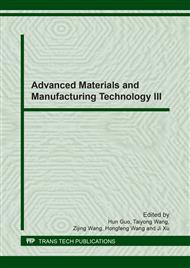p.210
p.219
p.225
p.235
p.245
p.252
p.261
p.271
p.279
Study on Two-Step Aging Technology of 6082 Aluminum Bumper
Abstract:
The influence of four parameters of two-step aging on the mechanical properties of 6082 aluminum alloy bumper was studied by orthogonal test. The results show that compared with the single stage aging, the two-step aging process can reduce the aging time and improve the production efficiency under the premise of the mechanical properties of the bumper meet the requirements. Among the four aging process parameters, the second stage aging temperature and holding time are the main factors that affect the final results, while the first stage aging temperature and holding time are secondary factors. The most suitable aging process parameters for the 6082 aluminum alloy bumper is (150 °C, 2 h) + (190 °C, 2.5 h). After two-step aging, the grain of the aluminum bumper is small and evenly distributed, leading to good mechanical properties. The generalized experiment shows that the application of the two-step aging process still has some limitations and needs to be further optimized and perfected.
Info:
Periodical:
Pages:
245-251
Citation:
Online since:
February 2018
Authors:
Keywords:
Price:
Сopyright:
© 2018 Trans Tech Publications Ltd. All Rights Reserved
Share:
Citation:


